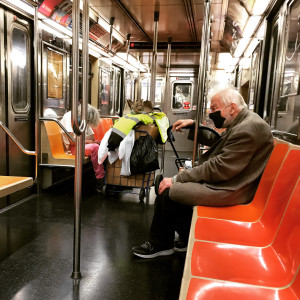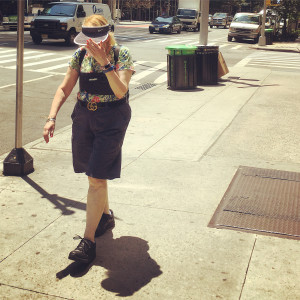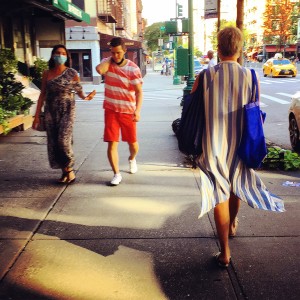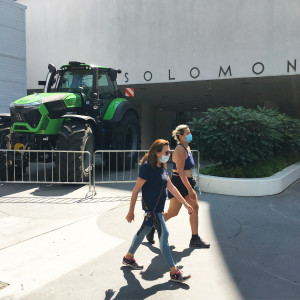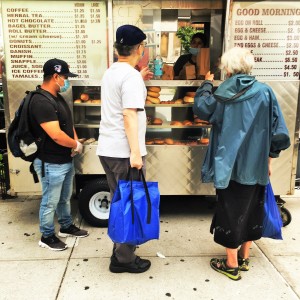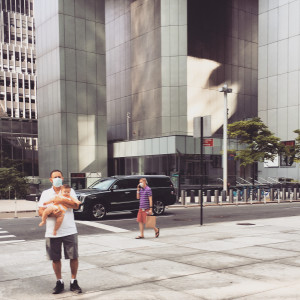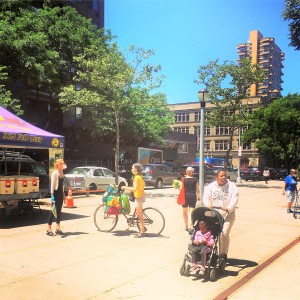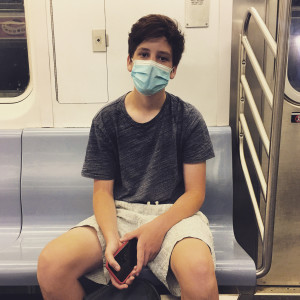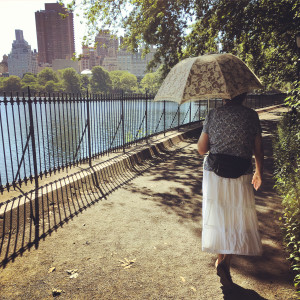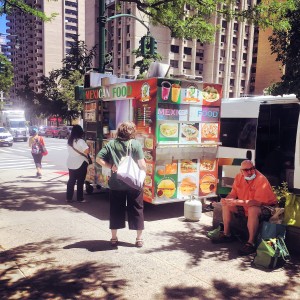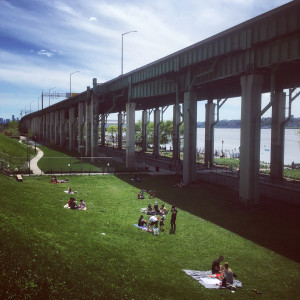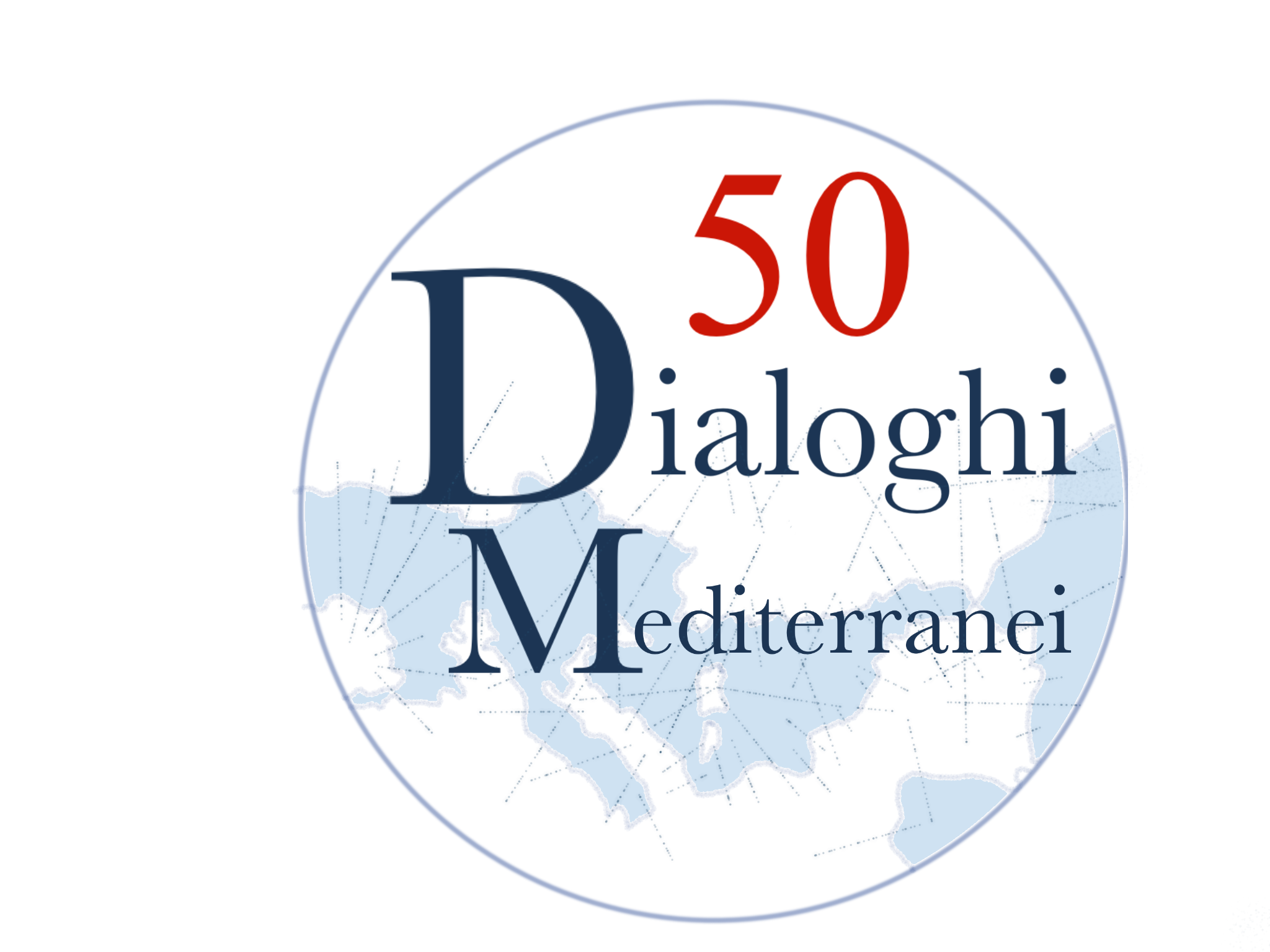il mondo delle mascherine. Immagini
di Sandro Battaglia [*]
These days, we have arrived at a point in which we are asked to do only one thing, more or less. Wear a mask!
While mask wearing is easy enough, it is unrealistic to expect perfect compliance with that request. However, when one sees masks worn, the sense of community with our fellow citizens is heightened. Community with our family and friends and even with strangers.
And in a city like New York, this sense of all for one is both new and old. New because masks are something we have not seen in everyday usage in generations. But also normal because masks are now only the most recent way in which the citizens of a city work together for a common good.
In my photos as seen here, my goal was to highlight persons wearing their masks, whether in solitude or in the company of others. In some cases, I did not realize what I had photographed in detail until well later. In that respect, these photographs are less about mask wearing compliance and more about recording this historical moment. And part of that moment is my noting with pride that millions of fellow citizens that I do not personally know have “gotten the message” about mask wearing, both for themselves and for others.
A takeaway from this experience will be more commonplace mask usage, as one has long been accustomed to seeing in Asian nations. Only now do we in the west grasp that this gesture has always been less about protecting the wearer and more about protecting the rest of us from the wearer. This will be an aspect of mask caused community that will survive COVID. In a sense, we are now practicing how to more fully think and be concerned about other people.
What I’ve been drawn to doing, and have tried to do, with my photography is to capture the solitude of this moment in time. This is different from loneliness, with which solitude is often and incorrectly confused.
New York is a city in which solitude is typically quite prized. Beginning in mid-March, we began to see our streets freed up, with resultant ample space. Space that could be used for solitude, and better thought, even concentration. As it happened, I found myself photographing persons initially without masks, as we had no clear governmental mandate about masks, and later, with time and the virus’ settling in, with masks. Then, I found myself being proud of locals’ compliance with mask wearing, and was drawn specifically to images showing how good we were all being.
Initially, the only masks one would or could expect to see where of the medical variety, essentially tools for personal protection. Then, in an effort to provide more of a personal touch to mask wearing and to also allow fabric trade businesses to stay afloat, local purveyors manufactured masks from everyday items like denim, canvas, and linen. I purchased five masks from a denim shop in California, both to protect myself and to do my small part in helping their business and the economy at large. None of my five masks are the same. There’s a plaid, a solid, two stripes, and dots. They are mostly dark blue with an exception and are comfortable and agreeable with other things I already wear. And I imagine that this sort of math is going on now more than ever, as we are several months into this impression of permanency.
In New York, mask wearing, except for inside stores or on the subway, has never been deemed required. We have always been able to avoid mask wearing assume one could social distance by six feet or more from anyone else. While this can be difficult to do outdoors when merely walking by a stranger, the streets have been empty enough that it is largely possible. And apart from the element of protection that masks afford, there is the issue of respect for others. In effect, we make a collective statement that while we wish things were still like the old days, that we didn’t have to wear masks to protect us, we recognize that if you think enough of me, a stranger, to protect me from anything you might have, then the least I can do is protect you back. I don’t know your name. I don’t know who you are. We don’t speak. We mostly don’t look at each other. But the respect we have for each other, as strangers passing, is plain to see
Dialoghi Mediterranei, n. 45, settembre 2020
[*] Quando guarderete le foto di Sandro Battaglia, che riprende la sua città, sedetevi a terra, ben radicati al suolo e, protetti da ogni frastuono esterno, forse ascoltando uno o due brani malinconici (per esempio di Satie, la Gymnopedie n. 1, e le Variazioni Goldberg, BWV 988, Aria, di Bach) lasciate che New York City d’estate, ai tempi del Covid, vi attraversi. Dimenticate ogni stereotipo, la folla, il frastuono inscindibile delle voci e del business, Harlem o Chinatown piene di gente, i piers affollati, i concerti all’aperto, Central Park e i suoi prati ombrosi su cui distendersi, Le librerie dense di gente, il Lincoln Center con i lampadari di cristallo e i suoi giochi d’acqua, la fontana di Washington Park dove grandi e bambini immergono i piedi nei giorni di calura estiva mentre qualcuno suona jazz o un brano pop, gli skyscrapers con i loro ascensori in incessante movimento, i diners traboccanti, Wall Street e il suo flusso di brokers con le loro suites formali, le camicie bianche… Dimenticate la città in cui i molti bordi sono spesso trascesi, dimenticate le collisioni tra le gambe, le braccia, o i volti in perenne movimento, il Bowling Green Bull (il Toro di Arturo Di Modica) con i suoi coglioni portafortuna, impotente in quest’anno di tempeste, dimenticate la velocità e lasciate che questo tempo tanto sospeso e incerto vi catturi. Mostrandovi uomini e donne soli, per strada.
Uomini e donne di fronte, di spalle, che attraversano un incrocio, con i soli occhi esposti. Con il volto per metà coperto dalle mascherine. Fermi davanti a un furgone che vende cibo messicano, tra Park Ave e la 32nd Street, sotto un sole tagliente, con il volto nascosto dalla mascherina protettiva o da mani sottili dalle unghie smaltate di un rosso lucido e brillante, uomini e donne in subway… distanti, homeless con i propri miseri beni raccolti in un carrello da supermarket, padri che tengono tra le braccia il proprio figlioletto, quasi fosse un tributo alla vita, mentre in un’altra scena l’abito di una donna, colta di spalle svolazza come fosse la coda di un frac, una coppia esausta in metropolitana, o due gemelle che camminano all’unisono, quasi danzassero su un palcoscenico, interpreti uniche di un musical contro la Morte. Frammenti silenziosi, espressivi di una difficilissima condizione. Immagini che parlano di una solitudine dissonante e, paradossalmente, come fosse un ossimoro, rimandano al senso di comunità e di cittadinanza urbana, molto diverso da quello dell’epoca precedente alla pandemia, quando comunità e cittadinanza emergevano dalle azioni condivise, dagli incontri per strada, dalle assemblee, dal costruire un community garden, dall’opporsi con le idee e con i corpi a un progetto dei soggetti “forti”, dal permanere vicini, gli uni agli altri, scambiandosi parole, gesti, emozioni, esperienze, desideri e progetti, anche tra perfetti sconosciuti.
La comunità, dice Battaglia nel suo commento, a New York é un soggetto reale e permanente che agisce, e qui trapela dal semplice gesto dell’indossare la mascherina, per proteggersi e per proteggere gli altri, pensando al bene comune. Declinando una way of life genuinamente americana. Le foto più che registrare l’adeguarsi dei newyorchesi alle regole, documentano un preciso momento storico, che produce, oltre a condizioni precarie e di estrema sofferenza, un paesaggio inusuale. É raro, infatti, vedere New York City così vuota di gente, anche se, prosegue Sandro Battaglia, essa è una città in cui la solitudine è un bene prezioso e apprezzato. In questa metropoli sempre affollata, da marzo le strade si sono svuotate. Ampi spazi per riflettere o per meditare, mentre si cerca un proprio centro. Sandro, nel suo commento, ci racconta che durante quella fase, quando ancora non c’era un chiaro mandato governativo, ha fotografato tante persone prive di mascherina, poi indossata come fosse un accessorio oramai accolto, un mezzo, un oggetto protettivo che nelle foto é un simbolo di quanto “tutti noi”, dice orgogliosamente Sandro, “fossimo stati bravi” (Flavia Schiavo).
________________________________________________________
Sandro Battaglia, newyorkese di prima generazione i cui genitori sono emigrati in città negli anni ‘50 dal Sud d’Italia. Lavora come avvocato e vive a Manhattan. Non è un fotografo professionista ma ama ritrarre la sua città, le strade, gli abitanti e la vita quotidiana. Le sue foto sono disponibili su Instagram su @sbattagliaofficial
______________________________________________________________



